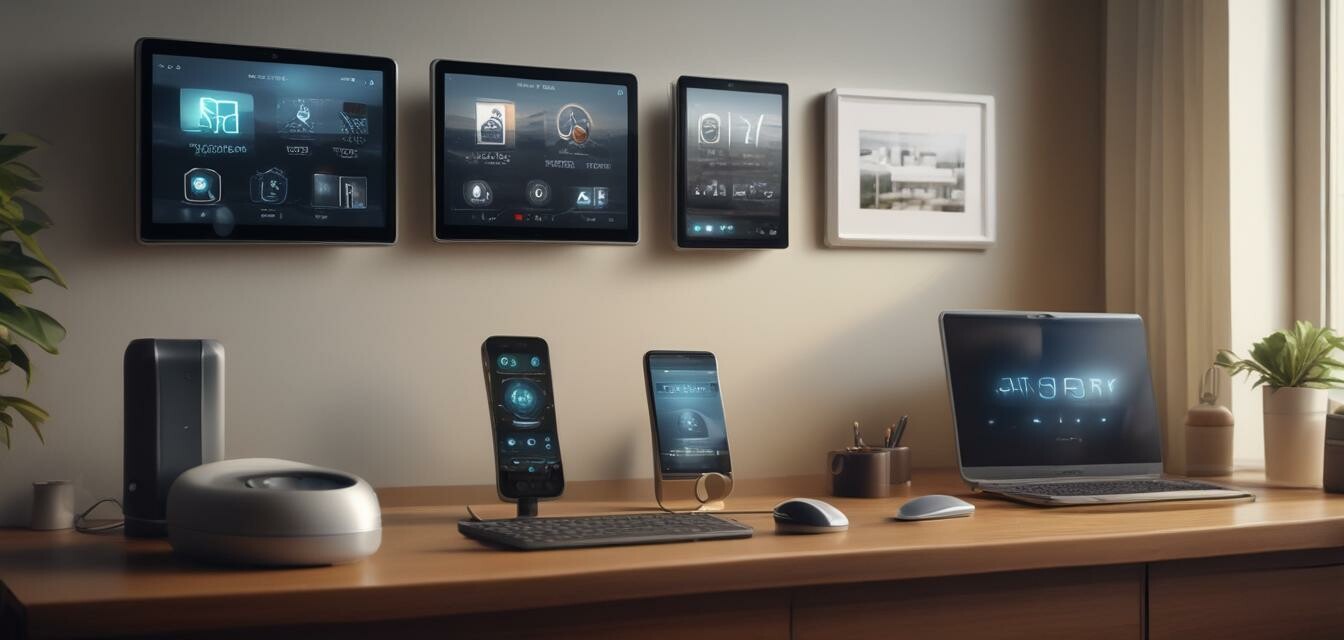
Smart home technology: A convenience for caregivers
Key Takeaways
- Smart home devices enhance safety for seniors.
- Technology provides peace of mind for caregivers.
- Remote monitoring capabilities improve caregiving efficiency.
- Smart systems help in daily task management.
- Innovative solutions can lead to better quality of life for seniors.
As the population ages, the responsibility of caring for seniors increasingly falls on family members and caregivers. In this landscape, smart home technology has emerged as a vital tool, offering enhancements in safety, connectivity, and overall quality of life. This article delves into how smart home gadgets can alleviate some of the pressures facing caregivers while significantly improving the living conditions for elderly individuals.
Understanding the role of smart home technology
Smart home technology refers to devices and systems that can be controlled remotely via smartphones or other devices, often through the internet. For caregivers, these technologies serve as multipurpose tools that not only simplify daily tasks but also enhance the safety and security of seniors living alone.
Benefits of smart home solutions for caregivers
- Enhanced safety: Devices such as smart locks and video doorbells provide an extra layer of security.
- Remote monitoring: Sensors that detect motion or changes in behavior help caregivers keep tabs on their loved ones.
- Smart communication: Video calling features enable caregivers to stay connected with seniors, regardless of distance.
- Energy efficiency: Smart thermostats and lighting can be controlled based on routines, reducing electricity costs.
Key smart home devices for caregivers
| Device Type | Function | Benefits |
|---|---|---|
| Smart Cameras | Monitor activity in real-time | Provides virtual presence and reassurance |
| Smart Doorbell | Allows viewing visitors remotely | Enhances security and reduces the risk of unwanted visitors |
| Smart Thermostats | Automatically adjusts temperature | Keeps seniors comfortable, reducing caregiver stress |
| Health Monitoring Devices | Tracks vital signs | Alerts caregivers to potential health issues |
Practical applications of smart home technology
Smart home solutions can be integrated into a caregiver's routine in multiple ways:
- Automate daily tasks, such as turning off lights or adjusting thermostats, to ensure optimal living conditions.
- Use motion detectors to receive alerts when seniors leave certain areas or if there are unusual movements.
- Utilize reminders for medication schedules via smart speakers or notification systems.
- Set up smart speakers to allow seniors to easily communicate with caregivers at any time.
How smart tech changes the caregiving landscape
The traditional role of caregiving has evolved significantly due to technological advancements. Smart home devices have made it feasible for caregivers to assist aging loved ones more efficiently. Here are some transformative impacts:
- Increased independence: Seniors can perform daily tasks with less assistance.
- Reduced caregiver burnout: Continuous monitoring systems alleviate daily stressors.
- Streamlined communication: Enhanced ways to stay connected allow for timely check-ins.
Current trends in smart home technology
"Smart home technology is not just a trend; it's a revolution in how we care for our loved ones." - Smart Senior Solutions Editor
The evolving landscape of smart home technology signifies not only technological advancements but also greater empathy toward the challenges faced by caregivers. Recent trends include:
- Integration with health care providers, allowing data sharing for tailored support.
- Expansion of voice-activated devices to cater to seniors with mobility issues.
- Increased focus on cybersecurity measures to protect sensitive data.
Preparing for the future of caregiving
As technology continues to advance, caregivers must stay informed about new devices and functionalities. While preparing for the future, consider exploring other smart categories, such as home security solutions and health monitoring devices, that can further enhance the caregiving experience.
Tips for integrating smart technology into caregiving
- Assess the specific needs of the senior to find the most suitable devices.
- Start with a few devices and gradually expand as comfort with technology increases.
- Encourage seniors to engage with the technology to foster independence.
- Regularly evaluate the effectiveness of the devices and make modifications as needed.
Pros
- Improves safety and security for seniors.
- Facilitates better communication between caregivers and seniors.
- Encourages independence and autonomy for elderly individuals.
Cons
- Initial setup may be challenging for some seniors.
- Dependence on internet connectivity can be a limitation.
- Potential for technology overload, leading to frustration.
Conclusion
Smart home technology has the potential to revolutionize caregiving, presenting numerous advantages for both seniors and their caregivers. By automating tasks, enhancing safety, and promoting independence, these tools offer invaluable support in an evolving caregiving landscape. For more about the latest in smart technology, visit our News and Trends section for updates.